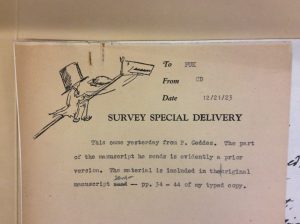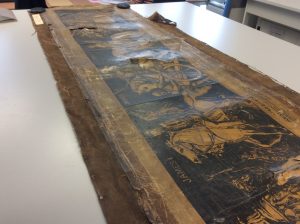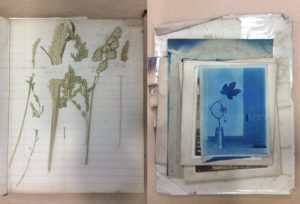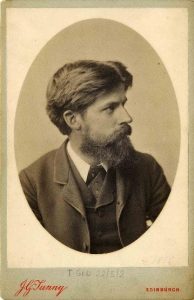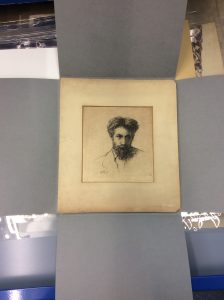In February we held a crowdsourcing event at Strathclyde University. The event took place over two days with the help of 23 volunteers. The aim of the two days was to rehouse the Geddes papers in archival four flap folders. The collection required new housing due to it being in non-archival folders that were too small and over filled. This was causing significant damage to the collection and making it difficult to access when an item was requested.
The part of the collection best suited for this event consists of 180 boxes of which 153 required rehousing. The rest of the collection has already been rehoused and is made up of journals and photographs. The damage found in the collection was tears, surface dirt, creasing and folds which were caused by unsuitable housing and poor handling before the collection arrived at the archives. Conservation work was carried out to stabalise the material before work could begin.
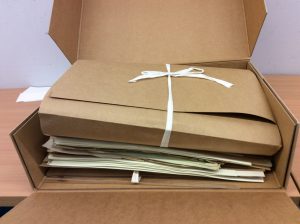
Over filled folders
Each day began with a short presentation given by the University Archivist, Victoria Peters and Project Conservator Nicole Devereux. This involved introducing the work of Patrick Geddes, described the conservation work carried out and explaining why the collection needed rehousing. This was followed by a training session on how to rehouse the collection with the rest of the day to start the practical work. In the afternoon subject librarians joined us to chat to volunteers about their roles within the library which was a great way for everyone to network.
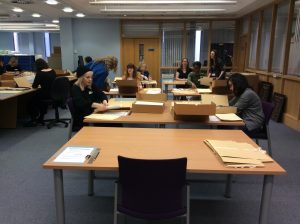
Volunteers at work rehousing
It was estimated it would take an individual conservator ten weeks to rehouse the material which we aimed to complete in two days. The event was also a great way to promote the collection and to make individuals aware of the Patrick Geddes collection held at Strathclyde University and the University of Edinburgh.
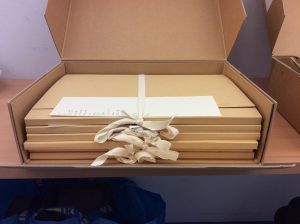
Box after rehousing
The two days were a great success with 143 out of 153 boxes rehoused! The event was well attended with a variety of people from different backgrounds. We would like to say a massive THANK YOU to everyone who was involved.

